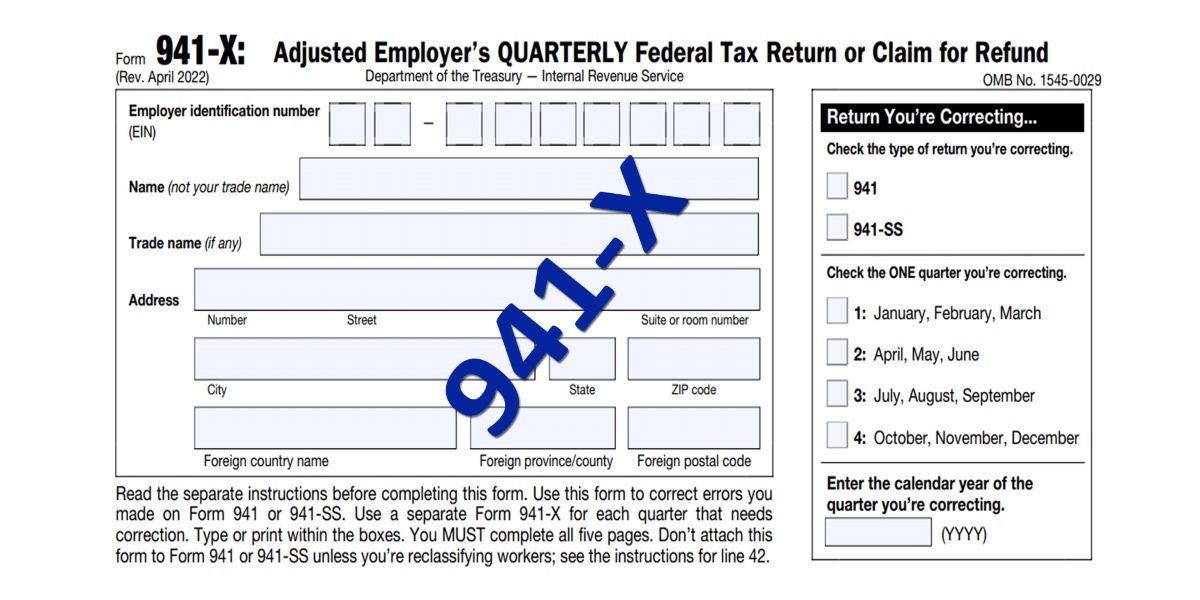

Finance
What Is A Retention In Insurance
Modified: February 21, 2024
Understanding the concept of retention in insurance is crucial for financial planning and risk management. Explore how retention affects the financial stability of insurance policies.
(Many of the links in this article redirect to a specific reviewed product. Your purchase of these products through affiliate links helps to generate commission for LiveWell, at no extra cost. Learn more)
Table of Contents
Introduction
Insurance plays a crucial role in managing risk and providing financial protection. It allows individuals and businesses to transfer the potential losses and liabilities to an insurance provider in exchange for paying premiums. While insurance policies provide comprehensive coverage, they also include certain provisions regarding the retention of risk.
Retention in insurance refers to the portion of risk that an insured entity or individual chooses to bear themselves, rather than transferring it entirely to an insurance company. Essentially, it is the amount of risk that policyholders are willing to accept and cover out of their own financial resources.
Understanding the concept of retention is essential in insurance, as it influences the level of protection, cost of premiums, and overall risk management strategy. By strategically setting the retention level, policyholders can strike a balance between mitigating potential financial losses and minimizing the cost of insurance coverage.
In this article, we will delve into the definition of retention in insurance, the importance of retention, the various types of retention, the advantages and disadvantages of utilizing retention, factors to consider when determining the retention level, and provide real-life examples to illustrate the concept.
Definition of Retention in Insurance
Retention in insurance refers to the portion of risk that policyholders choose to retain within their own financial capacity rather than transferring it completely to an insurance company. It is the self-insured amount or deductible that the insured party agrees to bear in the event of a covered loss or claim.
When a policyholder retains a certain amount of risk, they are essentially saying that they are responsible for covering losses up to that specified amount. For example, if a business has a retention level of $10,000 for property damage, they will cover any losses or damages below $10,000, while the insurance company will step in and cover losses above that threshold.
The retention level in insurance can be in the form of a monetary value or a percentage. It depends on the type of insurance policy and the specific coverage being considered. For instance, in property insurance, the retention level can be expressed as a fixed dollar amount, such as $5,000. In liability insurance, the retention level can be a percentage of the total claim, like 10%.
It is important to note that the retention level is distinct from the coverage limit of an insurance policy. The coverage limit defines the maximum amount the insurance company will pay for covered losses, while the retention level represents the portion that the policyholder will bear.
Furthermore, retention in insurance is different from self-insurance. Self-insurance refers to when an individual or a corporation assumes all of the risks associated with a loss without transferring any portion of it to an insurance company. Retention, on the other hand, implies that some level of risk is being transferred to the insurer, but the policyholder still retains a portion of the risk.
In summary, retention in insurance is the amount of risk that policyholders decide to retain themselves, beyond which the insurance company assumes responsibility for covering losses or claims. It is an important concept that allows individuals and businesses to manage their risk exposure effectively and tailor their insurance coverage according to their financial capabilities and risk appetite.
Importance of Retention in Insurance
The concept of retention in insurance holds significant importance for both policyholders and insurance providers. It allows for a customized approach to risk management and offers several benefits that contribute to the overall effectiveness of insurance coverage.
One of the key advantages of retention in insurance is that it provides policyholders with a greater sense of control over their risk exposure. By retaining a portion of the risk themselves, they have a vested interest in implementing risk mitigation strategies and maintaining a safe environment. This incentive can lead to improved risk management practices and lower overall losses.
Retention also plays a crucial role in cost management. By assuming a portion of the risk, policyholders can reduce their premium costs. Insurance premiums are influenced by the level of coverage and the deductible amount, with higher deductibles typically resulting in lower premiums. Policyholders can adjust their retention levels to strike a balance between coverage and cost, aligning their insurance expenses with their risk tolerance and financial capabilities.
Another benefit of retention is the potential for quicker claims settlement. When policyholders retain a portion of the risk, they have more control over the claims process and can expedite the resolution of smaller, low-value claims. This helps in avoiding the administrative burden and time delays associated with filing and processing minor claims, allowing insurance companies to focus on handling more substantial claims efficiently.
Retention in insurance also promotes a comprehensive risk management approach. By evaluating their risk exposure, policyholders can identify potential gaps in coverage and implement additional risk mitigation measures. This proactive approach improves overall risk preparedness and safeguards against unexpected financial losses.
Moreover, retention can enhance the policyholder-insurer relationship. By demonstrating a commitment to risk management and assuming a portion of the risk, policyholders can negotiate more favorable terms and conditions with insurance providers. Insurers may offer discounts or specialized coverage options to policyholders who are actively involved in managing their risk through retention.
However, it is important to strike a balance when considering retention in insurance. While assuming a portion of the risk offers benefits, excessive retention can expose individuals and businesses to significant financial liabilities in the event of a major loss. Therefore, it is essential to assess the potential magnitude of losses, the financial capacity to retain risk, and the availability of alternative risk transfer mechanisms before determining the appropriate level of retention.
In summary, retention in insurance is important as it provides policyholders with control over their risk exposure, allows for cost management, expedited claims settlement, promotes comprehensive risk management, and strengthens the policyholder-insurer relationship. By carefully evaluating and implementing retention strategies, individuals and businesses can tailor their insurance coverage to align with their risk tolerance and financial capabilities.
Types of Retention in Insurance
Retention in insurance can take various forms, depending on the specific needs and circumstances of the policyholder. Here are some common types of retention that individuals and businesses can consider:
- Deductible: A deductible is a common form of retention in insurance. It is a fixed amount that policyholders agree to pay out of pocket before the insurance coverage kicks in. For example, if a health insurance policy has a $500 deductible, the policyholder is responsible for paying the first $500 of medical expenses, and the insurance company covers the rest. Higher deductibles typically result in lower insurance premiums.
- Self-Insured Retention (SIR): Self-Insured Retention is prevalent in commercial general liability and professional liability insurance. It is a specific dollar amount that policyholders agree to retain for losses before the insurance coverage applies. Once the SIR is exhausted, the insurance company assumes responsibility for further covered losses. SIRs are common for large corporations with sufficient financial resources to cover smaller losses themselves.
- Loss Ratio Retention: Loss Ratio Retention is a form of retention where the policyholder retains a certain percentage of the loss as defined by the loss ratio of the policy. For instance, if a policy has a 70% loss ratio retention and the total loss is $100,000, the policyholder will be responsible for covering the first $70,000, and the insurance company will cover the remaining $30,000. This type of retention aligns the policyholder’s contribution to the overall severity of the loss.
- Aggregate Stop-Loss: Aggregate stop-loss is commonly used in health insurance and reinsurance contracts. It sets a cap on the total amount of claims that the policyholder is responsible for in a given period, typically a policy year. Once the aggregate limit is reached, the insurance company assumes responsibility for all covered claims beyond that threshold. This type of retention protects policyholders from catastrophic losses, ensuring that their financial exposure is limited.
- Occurrence versus Claims-Made Coverage: Retention can also differ based on the type of coverage provided in certain insurance policies. Occurrence-based policies require the policyholder to retain risk for all claims that arise from events occurring during the policy period, regardless of when the claims are reported. In contrast, claims-made policies require the policyholder to retain risk for claims made during the policy period. This distinction can impact the retention level and potential liability for the insured.
It is essential for policyholders to carefully evaluate their risk exposure and financial capabilities when deciding the appropriate type of retention to incorporate into their insurance coverage. Each type of retention has its advantages and considerations, and a tailored approach can help optimize risk management strategies.
Advantages of Retention in Insurance
Retention in insurance offers several advantages for policyholders who are willing to assume a portion of the risk. By strategically retaining risk, individuals and businesses can benefit in the following ways:
- Cost Savings: One of the primary advantages of retention is cost savings. By accepting a higher deductible or retention level, policyholders can significantly reduce the cost of insurance premiums. Higher deductibles are associated with lower premiums as the policyholder is assuming a greater portion of the risk. This cost savings can be attractive, particularly for individuals and businesses with strong risk management practices and adequate resources to handle smaller losses on their own.
- Control and Flexibility: Retention empowers policyholders with greater control and flexibility over their insurance coverage. By retaining a portion of the risk, individuals and businesses can align their coverage and risk tolerance. They can assume responsibility for smaller, more predictable losses while relying on insurance for catastrophic events. This level of control allows policyholders to customize their coverage to suit their specific needs and financial capabilities.
- Risk Management Incentives: Retention promotes a proactive approach to risk management. When policyholders retain risk, they have a vested interest in implementing effective risk prevention measures and maintaining a safe environment. They are incentivized to take measures to reduce the frequency and severity of losses, leading to improved risk management practices. This, in turn, can result in lower premiums, better loss experience, and improved overall risk preparedness.
- Quicker Claims Settlement: Another advantage of retention is the potential for faster claims settlement. Policyholders who retain a portion of the risk often have more control over managing and resolving smaller, low-value claims. By handling these claims internally, they can expedite the claims process, avoid administrative burdens, and reduce the time and effort spent on formal claim filing and processing. This enables insurance companies to focus on processing more substantial claims promptly.
- Enhanced Policyholder-Insurer Relationship: Policyholders who actively participate in risk management through retention can foster a stronger relationship with their insurance providers. By demonstrating a commitment to risk management and assuming a portion of the risk themselves, policyholders are viewed as partners in risk mitigation. This may lead to more favorable terms, specialized coverages, and potential discounts on premiums or policy enhancements offered by insurers.
While retention offers significant advantages, it is crucial for policyholders to carefully evaluate their risk appetite, financial capabilities, and potential loss exposure before determining the appropriate level of retention. Retaining too much risk can leave individuals and businesses vulnerable to significant financial liabilities in the event of a major loss. Therefore, a balanced approach is necessary, considering both the cost savings and the potential impact on financial stability.
Disadvantages of Retention in Insurance
While retention in insurance offers several advantages, it also comes with certain disadvantages that policyholders need to consider. It is important to be aware of these potential drawbacks before deciding on the appropriate level of retention. Here are some disadvantages of retention in insurance:
- Financial Exposure: One of the main disadvantages of retention is the increased financial exposure. By retaining a portion of the risk, policyholders take on the responsibility of covering losses up to the agreed retention level. This means that in the event of a substantial loss or a series of losses, policyholders may face significant financial burdens to cover the retained risk. It is crucial to assess the financial capacity and resources available to handle such losses before determining the appropriate retention level.
- Unpredictable Losses: Retention is more effective when losses are predictable and can be managed with relative ease. However, certain types of losses, such as natural disasters or major accidents, can be unpredictable and result in significant financial impact. In such cases, policyholders with high retention levels may find themselves facing unexpected and overwhelming financial obligations. It is important to assess the potential frequency and severity of losses before setting the retention level.
- Administrative Burden: With retention comes the responsibility of managing and handling claims. Policyholders who retain a portion of the risk may face administrative tasks associated with filing, processing, and monitoring claims on their own. This can result in additional time, effort, and resources being allocated to managing claims, which may be a burden for individuals and businesses with limited administrative capacities.
- Reduced Coverage: Another disadvantage of retention is the potential for reduced coverage in certain areas. By opting for higher retention levels, policyholders may have lower coverage limits, meaning that they will receive less reimbursement from the insurance company for covered losses. This can leave policyholders exposed to higher out-of-pocket expenses for losses that exceed the retention level.
- Underestimation of Risk: Retention requires a thorough evaluation of risk exposure and the ability to accurately estimate potential losses. Underestimating risk or setting a retention level that is too low can leave policyholders financially vulnerable. If substantial losses occur that exceed the retention level, policyholders may find themselves in a challenging situation without adequate financial resources to cover the losses.
It is essential for policyholders to carefully weigh the advantages and disadvantages of retention and conduct a comprehensive risk analysis before determining the appropriate level of retention. This evaluation should consider factors such as financial capacity, loss predictability, administrative capabilities, and the overall risk profile of the individual or business.
Factors to Consider when Determining Retention Level
Determining the appropriate retention level in insurance requires careful consideration of various factors. By evaluating these factors, policyholders can make informed decisions that align with their risk appetite, financial capabilities, and overall risk management strategy. Here are some key factors to consider when determining the retention level:
- Financial Capacity: Assessing the financial capacity to handle retained risk is crucial. Consider the amount of capital or liquidity available to cover potential losses up to the retention level. It is essential to strike a balance between retaining enough risk to save on insurance premiums and ensuring that adequate funds are available to cover potential losses.
- Risk Tolerance: Evaluate the risk tolerance level of the individual or business. How comfortable are you with assuming a certain level of risk? Consider the potential financial impact of losses and the ability to withstand those losses without significant disruption or financial strain.
- Loss Frequency and Severity: Analyze the historical loss data and anticipate the potential frequency and severity of losses. If the risk exposure is characterized by frequent but low-severity losses, a higher retention level may be suitable. In contrast, a lower retention level may be appropriate for risks associated with infrequent but high-severity losses.
- Industry Standards: Research industry standards and best practices in your specific line of business. Understanding how others in your industry manage risk and determine retention levels can provide valuable insights and benchmarks for making informed decisions.
- Contractual Requirements: Evaluate contractual obligations or regulatory requirements that may influence the retention level. Some contracts or industry regulations may specify minimum retention levels or limit the ability to transfer risk beyond a certain threshold. Compliance with these requirements is crucial to avoid potential legal or contractual issues.
- Availability of Alternative Risk Management Tools: Consider alternative risk management tools, such as risk transfer through traditional insurance or other mechanisms like captives or self-insurance programs. Explore options beyond retention to ensure that the overall risk management strategy is comprehensive and aligned with the specific needs and circumstances.
- Cost-Benefit Analysis: Conduct a cost-benefit analysis to determine the optimal level of retention. Evaluate the potential cost savings in insurance premiums against the potential financial exposure and administrative burdens associated with retained risk. This analysis will provide insights into the overall value and effectiveness of implementing a specific retention level.
It is important to note that the optimal retention level may vary depending on individual preferences, organizational objectives, and the specific characteristics of the risk. Regular review and reassessment of the retention level are recommended to ensure it remains aligned with changing risk profiles and objectives.
By carefully considering these factors and conducting a comprehensive analysis, policyholders can determine the most appropriate retention level that balances risk management, cost considerations, and financial stability.
Examples of Retention in Insurance
Retention in insurance can be observed across various types of policies and industries. Here are some examples of how retention is applied in different insurance scenarios:
- Property Insurance: A business owner decides to retain a $10,000 deductible on their property insurance policy. In the event of a covered loss, such as fire damage, the business owner will be responsible for covering the first $10,000 of the claim, while the insurance company will reimburse any amount above that threshold.
- Health Insurance: An individual selects a health insurance plan that has a $1,000 deductible. This means that the individual will need to pay the first $1,000 of their medical expenses out of pocket before the insurance coverage applies. By choosing a higher deductible, the individual can reduce their monthly premiums.
- Commercial General Liability (CGL) Insurance: A contractor purchases a CGL insurance policy with a self-insured retention (SIR) of $25,000. For any claims arising from work performed by the contractor, they will first be responsible for covering the initial $25,000 of the claim, while the insurance company will assume responsibility for any amount above that threshold.
- Workers’ Compensation: An employer opts to retain a portion of the workers’ compensation risk by participating in a large-deductible program. Under this arrangement, the employer agrees to cover a predetermined amount of workers’ compensation losses directly, up to a specified deductible limit. This allows the employer to have more control over claims management and potentially lower insurance premiums.
- Professional Liability Insurance: A medical practice retains a loss ratio of 50% on their professional liability insurance policy. If the total amount of claims in a given year is $200,000, the medical practice will be responsible for covering the first $100,000 of claims, while the insurance company will cover the remaining $100,000.
These are just a few examples of how retention is implemented in different insurance contexts. The specific retention levels and types may vary depending on the policyholder’s risk exposure, financial capacity, and industry norms. It is essential for individuals and businesses to carefully assess their unique circumstances and consult with insurance professionals to determine the most suitable retention strategy for their needs.
Conclusion
Retention in insurance is a fundamental concept that allows individuals and businesses to assume a portion of the risk themselves instead of transferring it entirely to an insurance company. By strategically setting the retention level, policyholders can strike a balance between mitigating potential financial losses and minimizing the cost of insurance coverage.
Throughout this article, we explored the definition of retention, the various types of retention, and the advantages and disadvantages of incorporating retention in insurance strategies. We discussed the importance of retention in providing control, cost savings, risk management incentives, and fostering a stronger policyholder-insurer relationship.
Factors such as financial capacity, risk tolerance, loss frequency and severity, industry standards, contractual obligations, and the availability of alternative risk management tools should be considered when determining the appropriate retention level.
Examples across different insurance policies, such as property insurance, health insurance, commercial general liability insurance, workers’ compensation, and professional liability insurance, illustrated how retention is applied in real-life scenarios.
Ultimately, retention in insurance is a valuable strategy that allows policyholders to align their coverage and risk tolerance. It offers cost savings, control, and motivations for proactive risk management. However, it is important to carefully evaluate the potential financial exposure, administrative burden, and the overall risk profile to ensure a balanced approach.
By understanding and implementing retention effectively, individuals and businesses can optimize their risk management strategies, enhance financial stability, and secure appropriate insurance coverage that aligns with their unique needs and circumstances.














